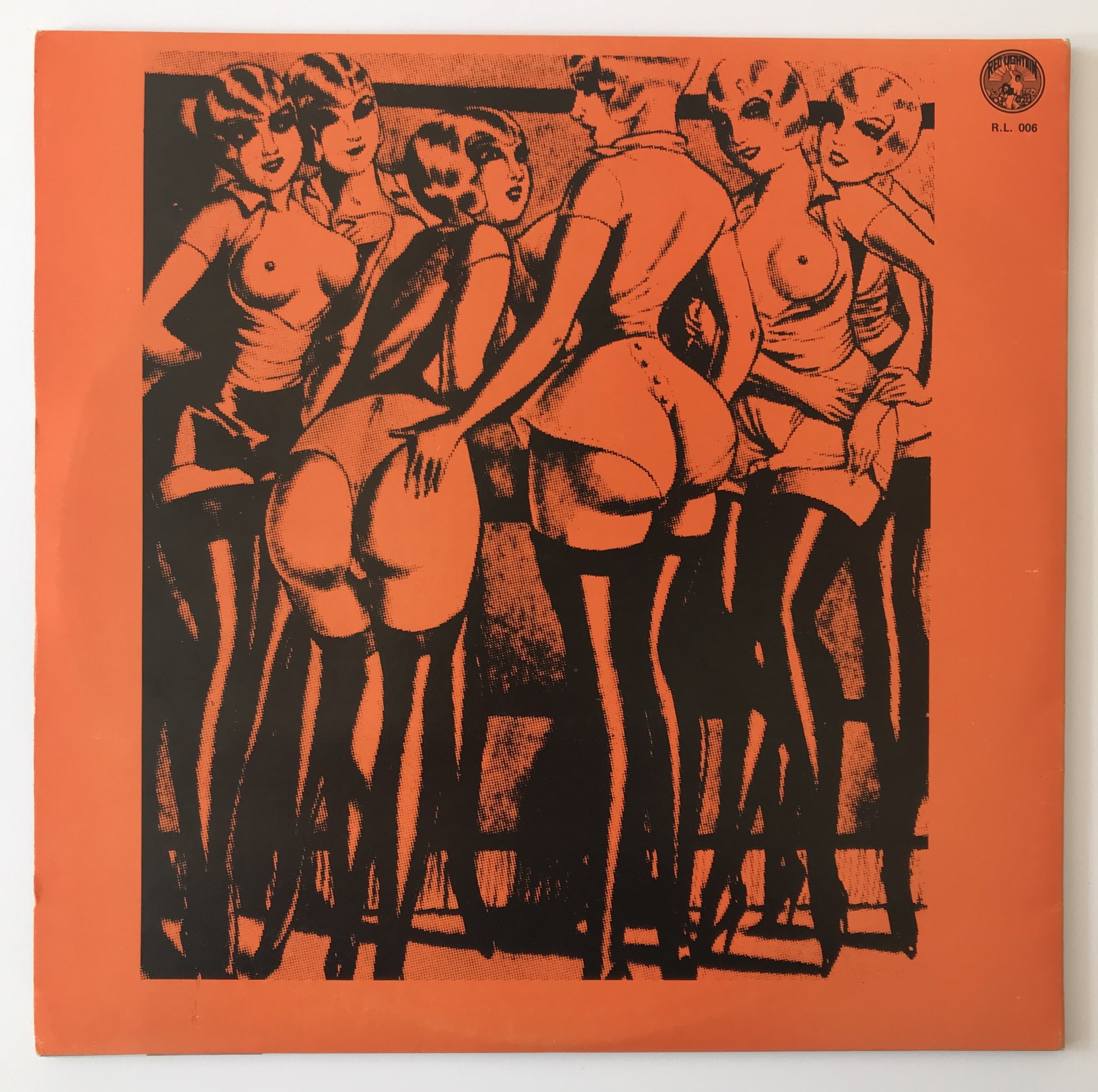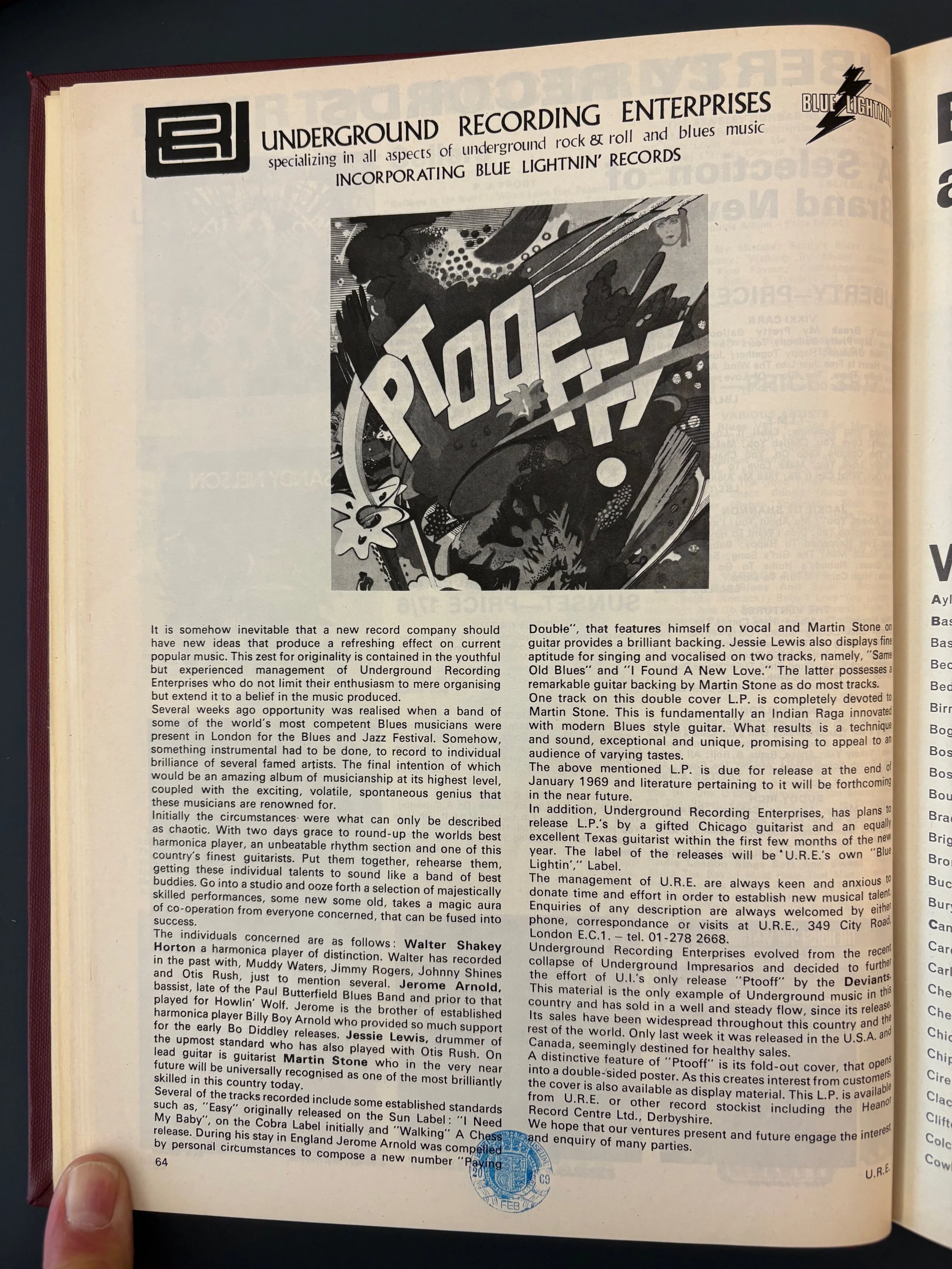letterhead, circa 1972, for Sippen and Shertser family of labels
Like the Union Pacific releases (see below), Ian Sippen and Peter Shertser’s collections of postwar blues wore their underground credentials on their sleeves.
I’m guessing the early releases were all unlicensed, certainly the first issue on Red Lightnin’, Buddy Guy’s In the Beginning (RL001), looks like a bootleg with its cheaply printed monotone matt image pasted onto a blank sleeve.
Later pressing of the label’s early titles were treated to slick upgrades. OZ’s Felix Dennis was responsible for the design of the first four volumes: Little Walter (RL002), John Lee Hooker (RL003) and Albert Collins (RL004). Denise Brownlow was credited for the design work on the five issues released by Syndicate Chapter and for the various artist compilation Blues in D Natural (RL005). The two subsequent Red Lightnin’ releases employed the graphic talent of J. Edward Barker, Mick Farren’s pal and illustrator at large for International Times and Nasty Tales.
Barker’s design for the label’s 7th release, Junior Well’s In My Younger Days, uses a photograph that looks as if it has been cropped from a minstrel scene in a Hollywood movie, though not one known to me. Whatever its provenance, it pulls in the same direction as the ‘Three Ball Charlie’ image on the front of the Stones’ Exile album. Both albums were released in 1972. The double LP anthology When Girls Do It (R.L.006) also sports a Barker design.
The three panels are fair summations of his interests and art: the mirrored picture of monks with pasted on devil’s eyes in the gatefold; montaged found images clipped from erotica and porn (lesbian, school girl and a Weimar-era nude) that surround a photograph of the Daughters of the American Revolution (with Abe Lincoln glued over the face of the sitting dowager and the open palm placed like a cockerel’s crown on her head) are in keeping with the aesthetic of the period’s underground publications: male adolescent salaciousness at the apparent service of political satire. On the sleeve’s rear you get a feast of backsides; this 1930s fetishism plays to the album’s title – the posterior posturing as gratuitous as anything on the front. It also echoes figures used on Barker’s sleeve for the Pink Fairies’ What A Bunch of Sweeties, another album from 1972. Fair enough?
The conjunction of rock’n’ roll revivalism, blues resurrectionism and the freak underground is fascinating in itself, but it also had me searching for some kind of appreciation, book or webpage on J. Edward Barker. I haven’t found much yet. Until then, there is always his and Farren’s Watch Out Kids, also from 1972 (a productive year)
Barker to the left, Farren to the right
Terms of engagement . . . The Record Buyer #1 (February 1969)










